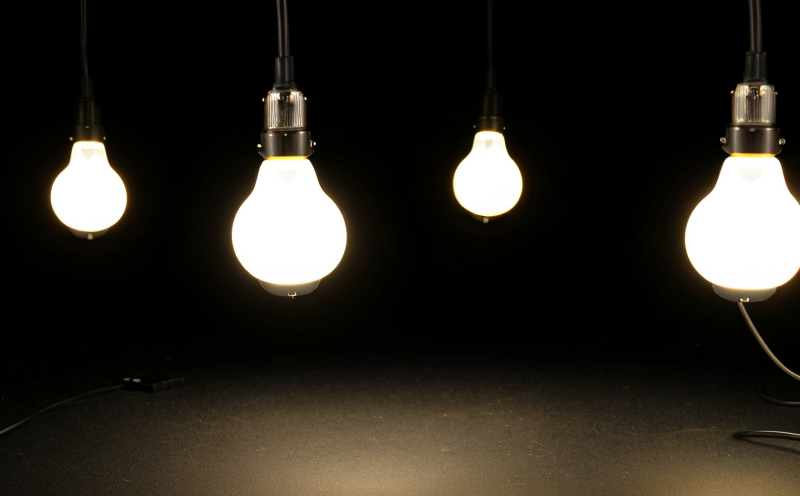Simulating Mechanical Stress in LED Lighting
Simulating Mechanical Stress in LED Lighting A Crucial Laboratory Service for Businesses
The world of lighting has undergone a significant transformation with the advent of LED technology. Energy-efficient, long-lasting, and eco-friendly, LEDs have become an integral part of modern life. However, their reliability is heavily dependent on various factors, including mechanical stress. Simulating Mechanical Stress in LED Lighting is a laboratory service provided by Eurolab that helps businesses ensure their LED products can withstand the rigors of daily use.
What is Simulating Mechanical Stress in LED Lighting?
Mechanical stress refers to the physical forces that can affect an LEDs performance and lifespan. These forces can be caused by vibrations, shocks, temperature fluctuations, or other external factors. When an LED is subjected to mechanical stress, it may experience reduced brightness, increased power consumption, or even complete failure.
Simulating Mechanical Stress in LED Lighting involves subjecting the LED to controlled mechanical stress conditions in a laboratory setting. This process mimics real-world usage scenarios, allowing for thorough testing and evaluation of the LEDs performance under various loads. By simulating mechanical stress, businesses can identify potential issues before releasing their products to the market.
Why is Simulating Mechanical Stress in LED Lighting Essential for Businesses?
Simulating Mechanical Stress in LED Lighting is crucial for several reasons
Ensure Product Reliability By subjecting LEDs to controlled mechanical stress conditions, businesses can ensure that their products meet or exceed industry standards.
Reduce Warranty Claims Products that have undergone simulated mechanical stress testing are less likely to experience failures, resulting in reduced warranty claims and associated costs.
Comply with Industry Regulations Many industries, such as automotive, aerospace, and construction, require LED products to withstand specific levels of mechanical stress. Simulating Mechanical Stress in LED Lighting helps businesses comply with these regulations.
Enhance Customer Satisfaction By providing reliable LEDs that can withstand various loads, businesses can improve customer satisfaction and loyalty.
Key Benefits of Using Eurolabs Simulating Mechanical Stress in LED Lighting Service
Comprehensive Testing Our laboratory is equipped with state-of-the-art equipment to simulate a wide range of mechanical stress conditions, including vibrations, shocks, and temperature fluctuations.
Customized Testing Programs We work closely with clients to develop tailored testing programs that meet their specific needs and requirements.
Accurate Results Our experienced team ensures that all tests are conducted with precision and accuracy, providing reliable results that can be trusted by businesses.
Rapid Turnaround Times We understand the importance of timely testing and delivery. Our laboratory is designed to provide fast turnaround times without compromising on quality.
Expert Analysis Our team provides detailed analysis and recommendations for improving LED product design and performance.
Comprehensive QA Section
Q What types of mechanical stress can be simulated in LED Lighting?
A We can simulate a range of mechanical stresses, including vibrations, shocks, temperature fluctuations, and humidity exposure.
Q How do I know if my LED product requires simulation of mechanical stress?
A If your LED product is intended for use in harsh environments or will be subjected to significant physical forces, its likely that simulating mechanical stress is essential.
Q What are the benefits of simulating mechanical stress compared to other testing methods?
A Simulated mechanical stress provides a more accurate representation of real-world usage scenarios than other testing methods. It also helps identify potential issues before they become major problems.
Q How long does the simulation process take?
A The length of time required for simulation will depend on the specific test conditions and the number of samples being tested. Our experienced team will work closely with clients to develop a customized testing program that meets their needs.
Q Can Eurolab provide analysis and recommendations after completing the simulation process?
A Yes, our team provides detailed analysis and recommendations for improving LED product design and performance based on the results of the simulated mechanical stress test.
Conclusion
Simulating Mechanical Stress in LED Lighting is a critical laboratory service that helps businesses ensure their products meet or exceed industry standards. By subjecting LEDs to controlled mechanical stress conditions, Eurolabs clients can identify potential issues before releasing their products to the market. With our comprehensive testing programs and expert analysis, we help businesses enhance product reliability, reduce warranty claims, and comply with industry regulations.
If youre looking for a trusted partner to simulate mechanical stress in LED Lighting, look no further than Eurolab. Our team is committed to providing accurate results and timely delivery, ensuring that your business can focus on what matters most delivering high-quality products to customers worldwide.




